We’re under attack
Listen up New Zealanders. Just imagine this news story appearing in the New Zealand Herald:
A pensioner from Oxford has been arrested by Food Safety officers for growing carrots in his backyard and sharing his produce with neighbours in exchange for silverbeet and cabbage. Officers raided the pensioner’s premises without a warrant and were armed. Agribusiness company employees, backed by the armed Food Safety officers, were also in attendance and will be prosecuting the pensioner.
Do you think I’m writing an Orwellian-style novel? Nope. I’m simply projecting forward based on a nasty proposed Act out there – the New Zealand Food Bill 160-2 (2010) – and should it pass its second reading in early 2012, it could make the basic human right to grow food, save seeds, and share the produce with friends and family, a quaint relic of the past.
Under the rhetoric of “food safety”, the NZ Government is about to hand over control of food production to mega-corporations like Monsanto, who want full control of the global food supply chain from field to table. Everything from farmer’s markets to heritage seed banks, community and individual vegetable gardens could be affected. Frankly, it’s Monsanto trying to get their genetically-modified seeds into every country on the planet and stitching up a monopoly on world food.
Go ahead and read the Bill. I’ll wait. As currently drafted, you could interpret that saving seeds will be an illegal activity; or sharing excess backyard produce with your neighbours will be an illegal activity; or selling your produce at your local farmer’s market will be an illegal activity. If you want a detailed overview of the Bill, go here.
I’ve read a lot on this, including the tin-foil hat wearing conspiracy theorists who say this is all part of the one world government future we’ll be facing. I don’t believe it will affect my right to grow a bunch of carrots in my backyard but it certainly could affect seed saving and heirloom, endangered plants and plants with medicinal properties. And that for me is the scary bit. Because it means that – if seed saving or heritage seed banks become illegal – all we’ll be able to get hold of is genetically-modified seeds (like Monsanto’s Round Up Ready soy beans) or seeds from a Big Food company like Monsanto. And if you want to learn about what Monsanto could do to you or me should we save a seed from a Monsanto crop or unwittingly grow a Monsanto-patented crop because some honey bee pollinated our land, just read this. Or this. Or this. It will scare the bejesus out of you.
If, like me, you have a small herb garden and use say mint leaves in your salad or brew a hot cup of mint leaf tea – well, your human right to do this could well be under threat. Why? Because the Big Food companies currently don’t have patents over mint or ginger or lemon or sage. So they can’t make mega-profits. The Bill is part of NZ’s obligations to the World Trade Organization’s (WTO) Codex Alimentarius scheme for global food control.
Go off and search Codex Alimentarius – this is even more scary if you ask me. The Codex Alimentarius (or Food Code) basically limits health freedom. Because the more natural health products we use, the less profits Big Pharma, Big Food companies get. And that applies to the mint growing in the backyard. The Vitamin and Mineral Guideline of the Codex can ban all clinically effective vitamins, minerals and herbs. This means stuff you buy from your local health food. Don’t believe me? Then read this. Or this. Or this.
The natural health industry could disappear and our level of nutrition will decline whilst Big Companies and Big Pharma push GM foods and synthetically-made drugs on us.
If you are concerned about the NZ Food Bill, you can sign an online petition. Do your own research on the Food Bill and Codex Alimentarius. There is some alarmist stuff out there – such as Big Companies and Big Pharma wanting to get rid of organic and homegrown food because we would then face ill-health and be forced to buy highly-priced prescription medicines. But when you read up about Codex Alimentarius, you have to wonder. So the NZ Food Bill could be one fatal step towards global corporations and Governments telling us what we can and can’t eat.
You can watch a video about the NZ Food Bill and how it might affect you on the Campbell Live website. Meanwhile, I’ll be defending my right to grow carrots in my own backyard.

Tiffany Outlet bites the dust
Well, I’d LOVE to lay claim to this – seems that the shonky Chinese website I complained about, Tiffany Outlet, has bitten the dust. Actually, it looks like the real Tiffany is suing the asses off a ton of shonky commercial websites, not just Tiffany Outlet. I’ve been campaigning against Tiffany Outlet I admit – via this blog, via Twitter and so on. I still have the email address for Tiffany Outlet – must send them an email to say “looks like you’re toast”. But I’m sure I’m just one of many poor sods that were taken in by shonky counterfeiters.
This is what the website of Tiffany Outlet used to look like:
 And this is what it looks like now:
And this is what it looks like now:
 Notice anything? Oooh yeah baby: looks like Tiffany Outlet has been served Notice and the site has been taken down. If you go to the site, you’ll see a whole host of legal documents. As someone with a law degree, I naturally waded my way through them to find the cause of action. And here’s the gist:
Notice anything? Oooh yeah baby: looks like Tiffany Outlet has been served Notice and the site has been taken down. If you go to the site, you’ll see a whole host of legal documents. As someone with a law degree, I naturally waded my way through them to find the cause of action. And here’s the gist:
- The plaintiff, Tiffany (NJ) LLC, filed an action against various unknown business entities who operate websites that advertise and sell counterfeit jewelry allegedly bearing Tiffany’s registered trademarks;
- A number of these entities also incorporate “Tiffany” into their website domain names;
- It seems the named defendants (who appear in Schedule A) are caught within the Judicial District of Nevada – presumably because they were distributing or selling into that jurisdiction via interactive commercial websites;
- Willful and intentional infringement and counterfeiting of Tiffany’s trademarks allegedly took place in total disregard of Tiffany’s rights and have taken place despite the defendants knowledge that their use of Tiffany’s trademarks was and is in direct contravention of Tiffany’s rights;
- The defendant’s registration of several domain names, which incorporate at least one of Tiffany’s registered trademarks, constitutes cyberpiracy in violation of 15 U.S.C. § 1125(d); and
- Irreparable injury to Tiffany has been caused by the defendant’s unlawful activities.
There appear to be 223 defendants Tiffany is hot on the trail of. I checked out the websites of about 20 of them and they now all display the Notice To Defendants.
I need to look into this further and found out the current state of the lawsuit. But I just had to do a quick post because I’m very pleased that Tiffany is taking action against shonky Chinese counterfeiters. I think the cheap knock-offs we’ve all no doubt bought in China, Hong Kong, Thailand etc probably brought us momentary satisfaction but, let’s face it, denied the rights of the legitimate maker of the product. Time has come for the knockoff sites and counterfeiters to bite the dust.
Tiffany Outlet
Well people, it’s embarrassing to admit this but – I’ve been the victim of a very shoddy Chinese company. I’ve decided to blog on my experience because I am sooooooooooooooo annoyed. Here’s what happened.
A friend of mine has always wanted the Tiffany solid pentagram-shaped silver keyring. And I’ve always fancied the Elsa Peretti silver mesh earrings. Being stuck in rural New Zealand, I can’t exactly wander down to my local Tiffany & Co. Over the years, I’ve been given some Tiffany items and bought things myself, so I’m very aware of what Tiffany jewellery should look and feel like.
I don’t usually order stuff off the internet because I’m paranoid about being ripped off. If I do order, it’s from reputable sites like Amazon or Strawberrynet. However, I thought I’d search for what Tiffany & Co might sell online and came across a site that I genuinely believed was a Tiffany outlet – rather like designer brands have outlet stores.
Here’s the site. Same distinctive Tiffany blue colour and use of the name Tiffany & Co. I spent time looking at the items and they seemed genuine. No sign of it being a non-American site – it even refers to the US Postal Service. I located the pentagram keyring and mesh earrings and I read the customer feedback. All glowing – but that’s because (as I now know) the people behind the site moderate comments and don’t seem to allow negative feedback to be posted.
So I ordered – here are the screenshots of the two items.
The site very clearly stated that I qualified for free shipping and that my order came to a total of $US65.20. The two photos below show what I received:
Notice anything? The keyring is NOT what I ordered and the earrings don’t have the solid silver ball at the top. The items arrived in what looked like the distinctive blue box Tiffany & Co use as well as the soft blue pouches Tiffany use.
But…and this is when I became alarmed….the invoice had Chinese characters on it and the items were frankly shoddy CRAP encased in equally shoddy cheap, clear plastic pockets.
To add salt to the wound, my credit card had been charged the shipping fee!!
I immediately sent an email (using the Contact Us tab) but…and here’s the interesting thing…on trying to send the email, the system asks you for a validation code but I could not see or find any validation code. One therefore assumes they don’t want you to contact them?
I then found an email address and emailed directly from my business email. A series of emails flew back and forth and have ultimately led to this post.
This is what transpired:
- they ended up admitting that they did not have the solid pentagram keyring in stock and took it upon themselves to send the star-shaped one instead. I reminded them that it says on their website that the pentagram keyring is IN STOCK and, if it’s not, they should therefore take it down from their site or say “Not in Stock”;
- they refused to comment on why the earrings that I received were not the same as the ones I ordered from the site ie the silver ball at the top of the earring was missing;
- their excuse about charging me for shipping? They said it only applied to Christmas 2010 orders. I pointed out that this was six months ago and their excuse was “oh website problems, sorry”. They did offer to refund $US15.00 but what’s the point of this?
- I then requested a full refund. The keyring is useless as it’s not the pentagram shape and the earrings are not as described on the site. And frankly, the two items are very clearly CHEAP CRAP. They have remained silent since this request.
- I have sent them two further emails requesting a refund and courtesy of response – nothing. I told them I would be blogging and using social media to expose their lack of customer service and shoddy goods. No response.
How is it that the real Tiffany & Co doesn’t sue these dudes assess off? The site is pretty clever at giving you some degree of comfort when it says: “We are officially licensed by Tiffany outlet sales distributor”. But it’s vague information, obviously designed to lure in the unsuspecting.
Sad to say dear reader that I have been duped. You’ve been warned – DON’T USE TIFFANY OUTLET. They will simply take your money and run, whilst you end up with cheap and nasty goods made in China.
UPDATE: quite a few readers have privately emailed me saying good on me for telling you about this shonky lot. They didn’t want to give away to Tiffany Outlet how you can spot them as being shonky from the website.
FURTHER UPDATE: Yeehah! Tiffany Outlet is having their asses sued by the real Tiffany. Read my latest post.
Flushing out the greenwash
 I’ve been taking a bit of a break from the ThinkingShift blog but you can still find me on the DailyOxford and ChinchillaBluePhotography blogs as well as on Twitter. Meanwhile, I’ve been working on doing a special post for a ThinkingShift reader who asked me why is it that people aren’t concerned about privacy. I am doing that post dear reader but – the Christchurch earthquake got in my way, as well as huge winds that are a frequent occurrence in the Canterbury region. So I’m way behind but it will happen as they say.
I’ve been taking a bit of a break from the ThinkingShift blog but you can still find me on the DailyOxford and ChinchillaBluePhotography blogs as well as on Twitter. Meanwhile, I’ve been working on doing a special post for a ThinkingShift reader who asked me why is it that people aren’t concerned about privacy. I am doing that post dear reader but – the Christchurch earthquake got in my way, as well as huge winds that are a frequent occurrence in the Canterbury region. So I’m way behind but it will happen as they say.
My favourite media company contacted me recently and I must blog on this issue because it’s quite a compelling, if not disturbing, story. When you think about sustainability, saving the planet, recycling and so on – do you ever stop to think about toilet paper packaging? You would think that if the packaging says “100% recycled paper” or “sourced from sustainable plantations” that you are buying a product that is environmentally friendly. But perhaps not.
A Choice investigation has found that environmental claims on toilet paper packaging are sometimes vague, leading the consumer into the trap of believing they are buying a superior product that protects native forests and biodiversity. Choice sites the example of a new toilet paper on the market that claims to be made from bamboo, straw, reeds and cotton – but cotton is a water and chemical-intensive crop and should be avoided for a single-use product such as toilet paper.
And then there are some toilet paper products that display an eco-label, such as Programme for the Endorsement of Forest Certification (PEFC), but a number of conservation foundations and societies say that this particular eco-label is meaningless as PEFC lacks on-ground auditing of forests and meaningful stakeholder engagement. So the consumer cannot be confident that the fibres sourced for the toilet paper are in fact environmentally and socially sustainable. Choice also could not find any toilet paper products that carried the The Forest Stewardship Council (FSC) global eco-label, which is supported by Greenpeace, ACF and The Wilderness Society. An FSC label would indicate that the product is made from certified virgin fibre sourced from sustainable forests.
The Choice investigation found that most toilet papers do not use an eco-label yet claim the fibre is sourced from sustainably managed forests. But when asked to verify the source of the fibre, the companies are vague or cannot back up claims. Most toilet papers claim to use a process known as “elemental chlorine-free bleaching”. Supposedly this is an environmentally-friendly bleaching process to whiten, but it uses chlorine. A far better choice is unbleached toilet paper because this is chlorine-free.
Another eye-opener is the triangular recycling symbol with the number four and LDPE acronym you often see on toilet paper packaging. It signifies that the product is low-density polyethylene. But Local Councils in Australia prohibit LDPE film in their recycling bins. The consumer is also led astray when it comes to logos of environmental organisations displayed on toilet paper packaging, saying that profits go to certain environmental projects. The problem here is that these environmental groups do not always audit environmental impacts or fibre source. Sadly, Choice concluded that most toilet paper manufacturers’ claims about sustainable forestry are unsubstantiated and those using the PEFC eco-label are not supported by some major environment groups.
So is there any particular toilet paper that the consumer can be confident is a sustainable product? Choice gave a 5-star rating to the following (in order of sustainability):
- Coles Green Choice, which has 100% recycled content from used office paper;
- Dandy Enviro Friend, which you can buy from Aldi. Funds environment groups and projects;
- Envirosoft – elemental chlorine-free bleaching or unbleached;
- Naturale – Wastepaper from process is recycled; and
- Safe brand.
Singled out for favourable comment was Kleenex Cottonelle Toilet Tissue. Choice acknowledged this toilet paper for environmental innovation with its waste reduction strategy for kids. A puppy is printed on every three to four sheets, letting kids know when to tear off.
So next time you go to the supermarket, read the toilet paper packaging carefully and be a more informed consumer with the help of Choice.
Taking a break
So I’m still settling into my new life here in New Zealand. There’s been so much to do I simply haven’t had time to update the ThinkingShift blog. I’m going to take a break for awhile from this blog but you can still find me on my other two blogs – my photography blog, ChinchillaBluePhotography and my blog on life in New Zealand, The Daily Oxford. Both these blogs have a quick photo or post so they are easy to keep going with. ThinkingShift posts require research and reflection – I don’t have the time for this right now. And you can always find me on Twitter.
In the meantime, thanks to everyone who has regularly visited ThinkingShift.
Living in peace
 Dear reader. I continue to settle into my new country, New Zealand. I’ve been battling it out on a couple of fronts since arriving a few weeks ago, mainly with the removalist company that managed to damage or destroy quite a few of our items, including my grandmother’s 1920s dining room table. You can expect a long, ranting (and possibly incoherent) blog post soon on what happened. I am still incensed by the whole situation. I’ll be back to regular posts soon.
Dear reader. I continue to settle into my new country, New Zealand. I’ve been battling it out on a couple of fronts since arriving a few weeks ago, mainly with the removalist company that managed to damage or destroy quite a few of our items, including my grandmother’s 1920s dining room table. You can expect a long, ranting (and possibly incoherent) blog post soon on what happened. I am still incensed by the whole situation. I’ll be back to regular posts soon.
I’ve also been battling it out with THE bureaucracy here. All countries have bureaucracy but I must say New Zealand is pretty good at it. If it’s not something that can be ticked off from some checklist, then authorities here don’t want to know about it.
Having said all this, I can tell you that Christchurch is a lovely place and New Zealanders are a very friendly bunch. Some people seem to be having trouble with my accent. Mind you, I would not say that my accent is broad Aussie, since both my parents were from New Zealand. But I do get blank looks occasionally and a request to repeat what I just said. Note to self: work harder at cultivating the Kiwi accent.
Things here are far more laid back than Oz. The odd cultural thing I’ve noticed is – hardly anyone seems to reply to emails. With the odd exception, you either get no reply at all or a reply weeks later. Obviously, I pick up the phone too but the lack of email exchange is curious. And then there’s customer service: it’s either exceptionally good or exceptionally lousy.
But I’m glad to be living in the most peaceful country in the world. Yep, that’s right folks: New Zealand has been named the most peaceful country in the world for the second consecutive year, according to the 2010 Global Peace Index (produced by the Institute for Economics and Peace (IEP). Iceland, Japan and Austria also rank highly (mmm…Australia isn’t in the Top 10). The 2010 map above shows countries ranked from most peaceful (in green) to least peaceful (in red). New Zealand was one of only three countries in the top ten to improve in peacefulness in the 2010 Index.

Globally, however, the world has been less peaceful in 2010, with violence impacting the global economy by US $7 trillion annually. Following the GFC and the faltering economies of many countries, there has been an intensification of conflicts on many levels from homicides to violent demonstrations and civil unrest. Interestingly, a 25% reduction in global violence would free up US $1.8 trillion annually. The good news for my American readers is that the United States has improved its 2010 score by showing the biggest improvement since 2007.
The top five countries have a number of things in common: stables governments and business environments, respect for human rights, low levels of corruption, high rates of participation in education and freedom of information.
So good news for me living here in peaceful New Zealand. And just to show you how peaceful and beautiful this country is, here’s a photo I took yesterday of our property covered in snow and another I took the day before (a sunny day) showing the beautiful Southern Alps and the gorgeous landscape that you encounter so often here. Woot!
Back soon!
I will be doing a looooong ranting blog post soon about the Australian removalist company that moved our household stuff here to New Zealand. Basically, some furniture was destroyed (an antique dining table, which as you know with antiques, once there’s damage the value diminishes) and various other precious items were either damaged beyond repair or smashed.
We are in the midst of coping with all this, including fighting it out with the removalist company. So I’ll be back in a week’s time or so and I’ll bring you photos of the carnage. If I don’t get satisfaction from the removalists, I’ll be naming and shaming. Watch this space!!
Are you getting exactly what you pay for?
 Almost every product you buy is sold by weight, volume, length, count or area. This means that when you buy a product, you might not be getting exactly what you think you’re paying for. Let’s take a tub of potato salad as an example: you purchase this from the deli at your local supermarket. Think you’re paying only for the potato salad? Ah, not exactly: you’re most likely paying for the weight of the plastic container too.
Almost every product you buy is sold by weight, volume, length, count or area. This means that when you buy a product, you might not be getting exactly what you think you’re paying for. Let’s take a tub of potato salad as an example: you purchase this from the deli at your local supermarket. Think you’re paying only for the potato salad? Ah, not exactly: you’re most likely paying for the weight of the plastic container too.
Australia has not had a national trade measurement system up to now and this has allowed retailers to “short-weight” or overcharge for items. But consumers should only be paying for the product and not the packaging. 109 years ago, it was written into the Australian Constitution that responsibility for weights and measures should be a national responsibility and, from July 1 2010, it will be.
A new national trade measurement system will come into effect on this date and will give the Commonwealth the responsibility for weights and measurements for the very first time. The system will cover measures used in trade that total more than AU$400 billion a year nationally, including exports, imports and over-the-counter sales such as meat and petrol. It will greatly reduce State compliance differences and bring Australia on an equal footing with its trading partners.
The new national system will replace 17 different pieces of State and Territory legislation and will make it simpler for businesses to operate within a uniform framework. The National Measurement Institute (which is a Division of the Department of Innovation, Industry, Science and Research) will become the national regulator of trade measurement and will be responsible for a national compliance framework delivered by 100 inspectors. These inspectors will use highly accurate equipment to inspect fuel dispensers at service stations, scales at retail stores and packaged products at supermarkets.
Obviously, this is a great boon for consumers because it will mean whether you are buying petrol in Hobart or groceries in Cairns, Australians will be confident they are getting exactly what they are paying for. Parliamentary Secretary for Innovation and Industry, Richard Marles, was quoted in a Media Release on May 20 and highlighted how Australian consumers have been at a disadvantage:
“Even small errors in weight or volume can add up significantly over time. If you lose one percent of a weekly $200 grocery shop because the scales are wrongly calibrated, over a year, you could be down more than $100“.
The new national system will require an education and awareness campaign, so the National Measurement Institute (NMI) has provided 10 Top Tips for Australian consumers:
- make sure you have a clear view of the scale
- check the scale shows zero weight – if it doesn’t, tell the trader
- make sure the price/kg on the scale matches the advertised price/kg
- check the total price on the scale is the price you’re charged at the checkout
- make sure you get everything that you paid for
- always read the label
- pay only for the product, not the packaging
- ensure the price is indicating $0.00 after you have picked up the nozzle and before you start filling your car’s fuel tank
- check your receipt to ensure the prices match the advertised price
- if you think you’ve been “short-weighted” or overcharged, notify the store manager and contact the Trade Measurement Section of the NMI if you think the short-weighting was intentional or happens regularly
Reform has been long overdue but finally the Australian consumer can shop with confidence. Thanks to Mark Communications for providing me with information about the National Measurement System and the photo accompanying this post.
Accidental spies
 Google’s feeling the heat in Germany and Australia. Co-founder, Sergey Brin, admitted that Google has “screwed up”. I guess that’s what you call it when you hack into 600GB of private wireless data, in over 30 countries, whilst cruising the streets snapping images for the Street View mapping service. Oh, how silly of me: Google “accidentally” managed to capture that 600GB of data, they didn’t intentionally set out to hack into private networks. But Google: I think you’ll find the finger of wire-tapping pointed at you. To appreciate the seriousness of Google’s accidental spying, they were collecting data that potentially includes emails, passwords, Facebook or Twitter updates and Web sites visited. And when you think about it, Google probably knows more about you and me than any Government does and yet Google is not regulated.
Google’s feeling the heat in Germany and Australia. Co-founder, Sergey Brin, admitted that Google has “screwed up”. I guess that’s what you call it when you hack into 600GB of private wireless data, in over 30 countries, whilst cruising the streets snapping images for the Street View mapping service. Oh, how silly of me: Google “accidentally” managed to capture that 600GB of data, they didn’t intentionally set out to hack into private networks. But Google: I think you’ll find the finger of wire-tapping pointed at you. To appreciate the seriousness of Google’s accidental spying, they were collecting data that potentially includes emails, passwords, Facebook or Twitter updates and Web sites visited. And when you think about it, Google probably knows more about you and me than any Government does and yet Google is not regulated.
This “inadvertent” collection of data has led to Google facing a class action lawsuit, which could see the search engine giant coughing up US$10,000 every time it screws up and collects data from unprotected networks. Two lawsuits have been filed, one in the Oregon federal court and the other in Washington and claim privacy violation pursuant to 18 USC §2511, under which plaintiffs and class members are entitled to $100 a day for each day their data was breached or $10,000 per violation per plaintiff. The two plaintiffs are Vicki Van Valin of Oregon and Neil Mertz of Washington, who claim that their homes’ wireless networks were not password protected and that the Street View vans cruised by their residences at least once. The lawsuit states in part:
“When Google created its data collection systems on its GSV [Google Street View] vehicles, it included wireless packet sniffers that, in addition to collecting the user’s unique or chosen Wi-Fi network name (SSID information), the unique number given to the user’s hardware used to broadcast a user’s WiFi signal (MAC address, the GSV data collection systems also collected data consisting of all or part of any documents, emails, video, audio, and VoIP information being sent over the network by the user [payload data]”.
The plaintiffs successfully applied for a temporary restraining order against Google and this prevents the search giant from deleting the collected data. Valin works for a technology company and works from home a fair bit. This would mean that a significant amount of data Valin sends over her wireless network is subject to her employer’s non-disclosure agreement. This could make things very interesting for Google and, in comparison, Facebook’s ongoing privacy bungles look kinda rosy.
Seems that New Zealand’s Privacy Commissioner is also interested in asking Google a few questions because oh nooooooo, shock, horror, Google accidentally collected data in NZ too. And the only time I’m likely to agree with Australia’s Communications Minister, Stephen “Internet Filter” Conroy, is when he said: “The code that the computer program collects is designed to collect this information..Yes, I’m saying they wrote a piece of code designed to do it….(and that this has been) the largest privacy breach in history across western democracies“.
BTW: don’t you think that Page and Brin are a couple of toothy dudes?
Photo credit: SMH.
NZ Spy Bill
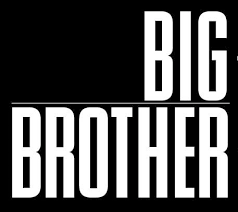 I’m trying to find out exactly how many CCTV cams are here in Christchurch, New Zealand. I’ve been told it’s 44. Certainly, 25 new cams were added to the CCTV network in 2009. In Oxford, where I’ll be living, I’ve yet to spot one. I will do a thorough check as there’s bound to be one, probably at the town’s only ATM. But it’s a relief to be in a town where you and the streets aren’t watched day in day out by a lot of unblinking eyes.
I’m trying to find out exactly how many CCTV cams are here in Christchurch, New Zealand. I’ve been told it’s 44. Certainly, 25 new cams were added to the CCTV network in 2009. In Oxford, where I’ll be living, I’ve yet to spot one. I will do a thorough check as there’s bound to be one, probably at the town’s only ATM. But it’s a relief to be in a town where you and the streets aren’t watched day in day out by a lot of unblinking eyes.
What has me more alarmed though is an NZ Bill I’ve blogged about before – the Search and Surveillance Bill 45-1 (2009). Skim that blog post first before reading on. The Bill is currently before the Justice and Electoral Committee which is due to report back in late 2010.
I was watching Sunday last week and there was a report on just how intrusive this Bill could be into the every day lives of New Zealanders. Why don’t you watch the session – it’s pretty damn frightening. I was pleased to see a partner from NZ law firm, Bell Gully, being interviewed about concerns that Government agencies will have increased surveillance powers and you can read that law firm’s submission here.
As I understand it, over 70 “non-police” NZ agencies (such as Fisheries Ministry, Inland Revenue Department, Commerce Commission, the Reserve Bank and the Pork Industry Board) already have the power to obtain a search warrant (as long as it is deemed “role appropriate) but the Bill is a step beyond this – it gives these agencies the power to enter private property and covertly install a listening or recording device, set up hidden cameras or plant tracking devices on cars without someone’s knowledge. At the moment, when one of these agencies obtains a warrant, it’s for the production of documents or to answer questions. If there is reasonable cause, a search of physical property might take place.
The S&S Bill extends investigatory powers and is trying to provide a homogeneous framework for regulators but….it is basically giving police powers to non-police Government agencies. Scary. Who will be overseeing exactly what these agencies can and can’t do? And under what circumstances will an agency be given the power to enter private property for secret squirrel operations? From my reading of the S&S Bill, it seems that non-police agencies would also be given the power to obtain a “residual warrant” that would allow them to legally hack into someone’s computer remotely and this would include asking an ISP to provide access to the person’s computer network.
Surely this Bill is contrary to the New Zealand Bill of Rights Act 1990, which gives New Zealanders the right to be free from unreasonable search and seizure?
What really, really scares me is that should the Bill become law, I can’t see how a person has the right to silence. It seems that under an Examination Order, a Government agency can haul you off for questioning and you have no right of refusal. I guess you could cite s60 of the Evidence Act and claim ‘privilege against self-incrimination’ – but I’m not sure how far that would get you.
Anyway, I plan to study this much more deeply. It’s very concerning that a democracy like New Zealand is considering such invasive powers (no doubt it’s being touted as an “anti-terrorism” measure). If you know anything, leave a comment.
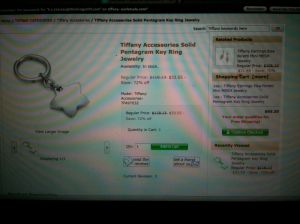
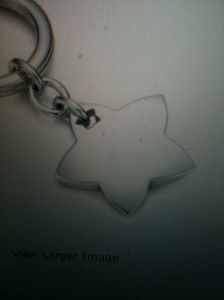


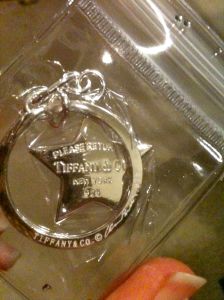
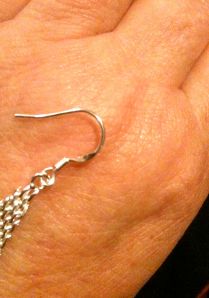






































 Made in New Zealand
Made in New Zealand







